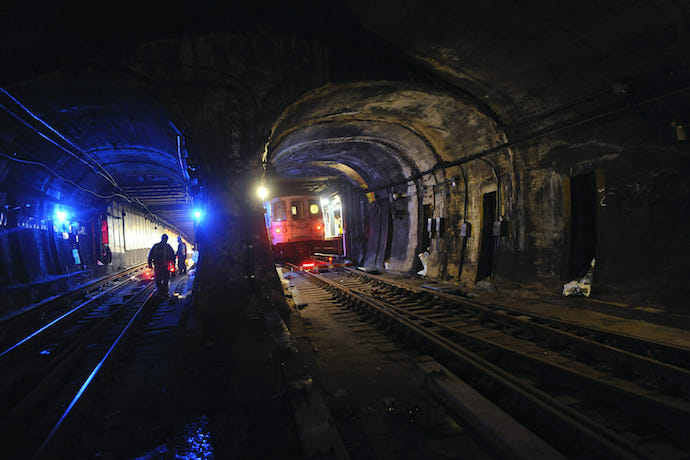
Tech
Smart Cities Require Smart Infrastructure
In September 2019, I addressed the members of the Illinois Municipal League on broadband connectivity and regional economic development. In the presentation, I pointed out that Illinois municipalities need to improve their infrastructure in order to have a solid “platform for commerce” that they can compete from.
All municipalities around the country need to be concerned with this as it is a matter of economic survival and extending their viability into the 21st century. It is not a frill issue or one specific to one region.
As we move forward, municipalities need to compete with one another to entice corporations and other organizations to develop new facilities and create jobs for their region. The one thing they need to have is a solid and smart infrastructure which includes adequate and redundant power and broadband connectivity so there is no single-point-of-failure.
Most corporations at this time have multiple mission-critical applications they depend on. If a municipality wants a corporate facility in their town, they need to have the redundant intelligent infrastructure in place and readily available to support those mission-critical applications which cannot have a single-point-of-failure.
Obsolete Infrastructure is Dumb Infrastructure
You cannot drive 100 MPH on a dirt road. It needs to be paved and balanced so that your car or truck can move fast. The same applies to network infrastructure. You cannot send multiple data and video transmissions on a slow copper line or a slow wireless antenna. You need to have fiber optics as well as high-speed wireless capabilities supporting all the latest streaming video applications. People expect this type of response and capacity for their smartphone, whether they are in a city, in a stadium, in a mall, or out in some rural area on a highway.
Speaking of highways, some new sensors for autonomous trucks to follow are being put into a highway that connects Mitchell Field in Milwaukee, Wisconsin to the area of Racine County for the new Foxconn facility. These sensors on Highway I-94 will allow them to send driverless trucks back and forth to the airport. There are other companies that can benefit from this because they are also along the same corridor. Both Uline and Amazon have large facilities along Highway I-94. They can also benefit from this new “smart highway” application.

Another distribution facility was just announced for Amazon in the Beloit, Wisconsin area. It looks like they can extend those same type of road sensors into Highway I-43 and connect the Beloit area up to Mitchell Field as well. What other facilities can benefit from this add-on? This is a critical question for those involved in regional economic development.
These new “smart” capabilities will be further utilized by other companies along the same route. Being one of the first areas to implement this type of “smart highway,” will mean a better way to entice new companies to locate into these areas. They can take advantage of new technology which could prove to be very valuable to their businesses and their logistics models.
Connectivity: If you Don’t Build it, They Will Not Come
As I discuss in my book, LOCATION LOCATION CONNECTIVITY, the old adage, “The three most important words in real estate” have shifted. It is no longer “location, location, location,” but has now become “location, location, connectivity” as the three most important words in real estate.
If you do not build out intelligent infrastructure where both the layer of power and broadband connectivity are redundant, you are not going to attract and maintain Class A corporate facilities whether they are stand-alone or in an intelligent business campus (intelligent industrial park).
Corporate site selection committees used to look at an area or region to see whether or not it could support their new facility. They would ask the municipality about the infrastructure and if there was something missing, like diverse routes to a central office or power substation, they would request that it be part of this endeavor and they would ask for a timetable to finish or complete the additions before building the facility. Ten to fifteen years ago, broadband connectivity was not even on their list. Now, it is one of the top three criteria they are looking for.
Today, most municipalities take it for granted that they can build out something within the infrastructure for a prospective corporate tenant. The reality is, if you do not have this infrastructure in place, the corporate site selection committee will move on to some other location who will.
That is how competitive it is today.
If your infrastructure needs a lot of upgrades, the corporate facility who is looking to build, will keep looking and not wait for your work to be completed. Just look at the area in Racine County. Some people were in amazement that over $175 million was spent on infrastructure upgrades by the municipality, but it is what is necessary to land the big facilities that will impact job growth in the region.
2020 is almost here. 2020 was the pivotal year to announce and implement 5g networks across all regions. We are just beginning to see certain cities and regions offer this, but it is far from being a ubiquitous service.
Getting this Concept and Initiative into More Areas
Like anything else, a competitive advantage like implementing intelligent infrastructure has a timeframe associated with it. Competitive advantages soon become competitive necessities in order to compete. We are at that point with intelligent infrastructure. Those who implement it first will be the first to benefit from it and it will be a competitive advantage to them.
Those municipalities who wait will lose out on good opportunities and in the course of time, they will recognize it as a competitive necessity if they want to compete. Those who wait too long will see it as a competitive disadvantage and suffer a lack of viability.
Most cities need to initiate a program into looking at intelligent infrastructure as a strategic differentiator for economic development.

